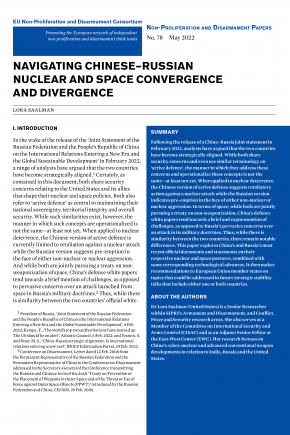Navigating Chinese–Russian Nuclear and Space Convergence and Divergence
Following the release of a China–Russia joint statement in February 2022, analysts have argued that the two countries have become strategically aligned. While both share security concerns and even use similar terminology on ‘active defence’, the manner in which they address these concerns and operationalize these concepts is not the same—at least not yet. When applied to nuclear deterrence, the Chinese version of active defence suggests retaliatory action against a nuclear attack while the Russian version indicates pre-emption in the face of either non-nuclear or nuclear aggression. In terms of space, while both are jointly pursuing a treaty on non-weaponization, China’s defence white papers tend towards a brief and vague mention of challenges, as opposed to Russia’s pervasive concerns over an attack in its military doctrines. Thus, while there is similarity between the two countries, there remain notable differences. This paper explores China’s and Russia’s most recent official documents and statements on their respective nuclear and space postures, combined with some corresponding technological advances. It then makes recommendations to European Union member states on topics that could be addressed in future strategic stability talks that include either one or both countries.
I. Introduction
II. China’s official stance on nuclear and space domains
III. Russia’s official stance on nuclear and space domains
IV. Convergence, divergence and topics for talks
V. Conclusions

